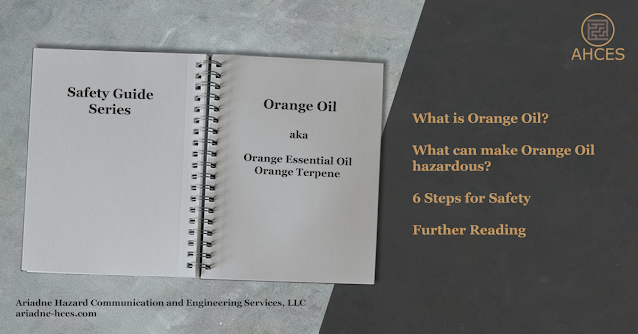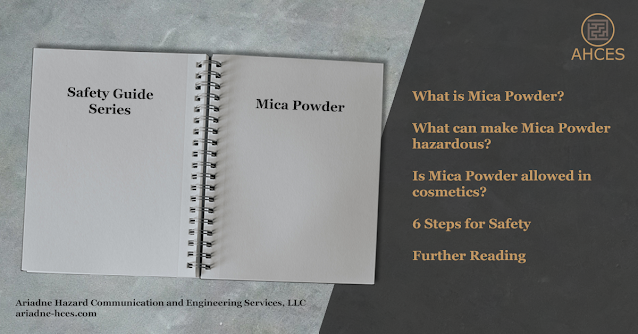Ultramarine Blue Safety Guide
What is Ultramarine Blue?
Ultramarine Blue, also known as azure blue, lazulite, and pigment blue 29, is a mineral, both natural and synthetically derived. Historically, ultramarine blue was made from ground lapis lazuli or lazulite. In modern times, synthetic ultramarine blue is the most common form available to consumers. Ultramarine blue is commonly used as an artist's pigment in paints, as well as a pigment in pottery glaze.
Ultramarine blue has the CAS Number 57455-37-5.
The CAS Number is used to identify ultramarine blue as an ingredient on safety data sheets (SDS) and other safety documentation. When looking for ultramarine blue as an ingredient in products, look for the above CAS Number within the composition table.
Notable Properties of Ultramarine Blue
Ultramarine blue is a sulfur-containing, sodium-aluminosilicate.
Ultramarine blue is known for its brilliant blue color, making it a popular pigment. Synthetic ultramarine blue tends to be a brighter, more intense blue than natural ultramarine blue, due to having smaller and more consistently shaped particles.
What Makes Ultramarine Blue Hazardous?
In the dry, powder form, ultramarine blue can be physically irritating to the respiratory system if inhaled. It is not classified as a risk for silicosis or other silicate mineral related respiratory conditions.
In the event of a fire, ultramarine blue itself is not flammable but can decompose and release toxic fumes. It is important to stay upwind of a fire that is burning around ultramarine blue products.
Ultramarine blue will also react with acids to form hydrogen sulfide. Hydrogen sulfide is a toxic, irritating gas.
Risks associated with ultramarine blue containing products generally come from other ingredients. For example, the linseed oil found as the binder component of many oil paints is combustible and can be irritating to the eyes and skin.
Be sure to familiarize yourself with the hazards of all ingredients whenever working with a new product.
Ultramarine Blue Frequently Asked Questions
Is ultramarine blue natural?
Historical paintings used natural ultramarine blue made from the ground mineral lazulite. Modern paintings use a synthetic version of ultramarine blue, as it is a brighter blue in color and does not risk having potentially dangerous impurities in it which the natural version can have.
It is still possible to purchase natural mineral derived ultramarine blue or make it from lazulite.
Is ultramarine blue toxic?
Ultramarine blue is not considered toxic. However, if exposed to acid, it can break down and produce the toxic gas hydrogen sulfide.
Additionally, other materials in a paint may be harmful to health, such as the binder or other pigments. Carefully check all tubes of paint for an ACMI "AP" stamp, which indicates the paint is non-toxic, or an ACMI "CL" stamp, which indicates the paint is toxic.
Is ultramarine blue the same as cobalt blue?
Ultramarine blue is a different color and chemically different from cobalt blue. Cobalt blue is made from cobalt(ii) aluminate, which is a known skin sensitizer and irritant and can be toxic through prolonged or repeated exposure.
Ultramarine blue is considered a safer alternative to cobalt blue pigment.
6 Steps for Safety
Step 1: Read the Warnings
When working with a product for the first time, always read all the safety documents first. This includes safety data sheets, which should be provided by the manufacturer or importer of the ultramarine blue product. There may also be an OSHA chemical label, a Consumer Protection label, or AMCI label on the packaging of the ultramarine blue product. These documents all contain important information on the hazards of the product and instructions on how to mitigate those hazards.
As discussed above, different compositions in different products may cause additional hazards to be present beyond the properties of a product with ultramarine blue as the only active ingredient. Be sure to familiarize yourself with the differences between separate ultramarine blue based products.
Step 2: Prepare Your Workspace
Creating a safe workspace, sometimes referred to as engineering control, is a key component of working safely with any potentially hazardous substance.
For example, if the ultramarine blue product is in powder form, then any dust will have to be kept under control. A fan that would blow dust particles around should be avoided. A dust collection with a filter to capture dust is recommended.
It is also important to keep acidic substances away from ultramarine blue based products.
Step 3: Gather Your PPE
For pure ultramarine blue powder, you will need the
following PPE.
- Respiratory Protection
- A dust mask meant for inorganic particles will protect the respiratory system from irritation from accidentally breathing in dust particles.
Any other PPE needed for an ultramarine blue product, such as liquid paint, will be determined by any hazards associated with other ingredients in the product.
Step 4: Clear Your Workspace
Having a clear workspace is an important part of safety. Clutter can cause accidents and can prevent you from noticing if something has spilled.
This is also a good time to double-check check any engineering controls are in proper working order, such as replacing the filters on a dust collector.
If you are working in a shared space, make sure anyone around you can also remain safe when you are working with ultramarine blue products. For those working at home, this can include family members and pets.
Step 5: Do The Work
If engineering controls and PPE are used properly, and the material is kept away from acids, working with ultramarine blue has minimal hazards.
If work cannot be completed in one sitting, be sure to properly seal any ultramarine blue containers to prevent spills or accidental release when not in use.
Step 6: Clean Up
Dust generation should be avoided when cleaning up solid ultramarine blue. Either a vacuum with a filter or a damp cleaning cloth can be used to pick up spilled any stray solid cupric sulfate while preventing dust generation.
Be sure to dispose of any waste in accordance with local regulations. This is particularly important with liquid paint products. Many areas require any liquid paints be allowed to complexly harden before disposal.
Further Reading
The National Library of Medicine has a PubChem Ultramarine Blue Summary. Haz-Map also has an article under the name of Azure Blue, which is synonymous with ultramarine blue.
Check out the Safety Guide Series Hub for more safety guides.
Sources Cited
Haz-Map (n.d.). Azure Blue. Haz-Map.com. Retrieved November 29, 2023, from https://haz-map.com/Agents/2052
National Center for Biotechnology Information (2024). PubChem Compound Summary for CID 71587188, Ultramarine Blue. Retrieved November 29, 2023 from https://pubchem.ncbi.nlm.nih.gov/compound/Ultramarine-Blue.
Original Posting Date: Nov. 29, 2023
Last Updated: Feb. 12, 2024






Comments
Post a Comment